Text



Duncan Curdy MacSporran Haston was born on April 19th 1940.
Commonly known as Dougal, Haston was one of the finest climber Scotland has ever produced.
Haston was born in the parish of Currie on the West Side of Edinburgh in 1940 .Even with the war on Haston seemed destined to follow in the footsteps of countless others into a life of work in the mills and shops and on into obscurity. However, history and Everest would hold an entirely different destiny for Dougal.
Haston developed a taste for climbing while trekking about the Pentlands in Scotland. Rock climbing skills were acquired by clambering up railway and riverside walls around Currie. Already showing a mischievous streak, which would become darker later in life, Haston and friends would climb to the top of Currie Church and leave things, including women’s underwear, atop the flagpole!
He soon began rock and ice climbing and struck up a friendship with another climber, Robin Smith, who like so many others would die climbing. Smith died in 1962, 4 years before Haston gained fame for the first direct (bottom to top) ascent of the North Face of the Eiger in the Swiss alps. Though a broken rope would claim the life of American climbing great John Harlin during the climb, Haston would finish the ascent with a group of German climbers and name the route John Harlin Direct.
His run-up to a climb of Everest included the first climb of the South Face of Annapurna in 1970, and the first summit of Changabang in India in 1974. Along with fellow Briton Doug Scott, Haston summited Everest via a previously unclimbed route up the South West Face. Though forced to spend the night following their summit huddled in a hand-dug snow cave at the South Summit the two emerged unharmed by their experience. Later that same year Haston would participate in the first climb of the South West face of Mount McKinley in Alaska.
Haston was no angel, his exploits away from the climbing routes were as legendary as his feats of mountaineering. He led a life renowned for drinking, fighting, stealing and risky climbs which would culminate in a drunk-driving accident in which a person was killed, a conviction and prison time.
His career and life was cut short by an avalanche while skiing in the Alps in 1977. There is a plaque honouring him on a railway bridge in Currie where he was born and learned to climb.
There’s a great article in the Herald from 2001 focusing on his girlfriend Ariane Giobellina which must have been very hard for her………the article has a paywall on it since I last read it, but if you are clever there are ways round it, I myself use Tor Browser to get round them.
https://www.heraldscotland.com/news/12245382.dougal-haston-had-a-legendary-love-of-wine-women-and-the-mountains-it-was-the-last-that-killed-him/
I also recommend the article below, which describes Haston as “the Mick Jagger of the Mountains”
https://www.adventure-journal.com/2020/12/historical-badass-climber-dougal-haston/
8 notes
·
View notes
Text


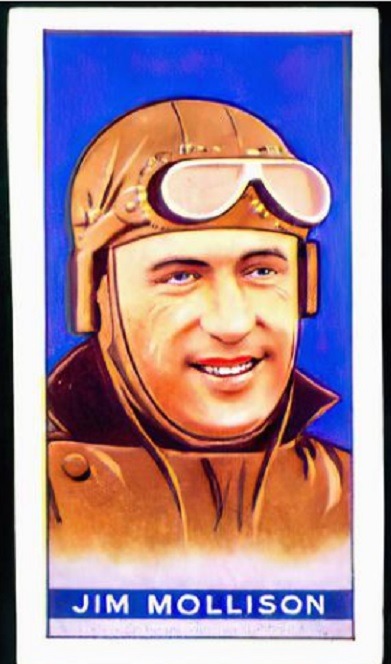
James Allan Mollison was born on April 19th 1905 in Glasgow.
Graeme Obree, Chris Hoy and a certain steam train have all bee called The Flying Scotsman in their time, but the original title goes to a man who actually did fly, Jim Mollison.
Jim would go on to become a pioneering aviator, breaking records for long distance flights. His marriage to fellow aviator Amy Johnson also saw them lauded as the golden couple during their time together.
Born the only child of Hector Alexander Mollison, a consultant engineer, and Thomasina Macnee Addie. He was educated at The Glasgow Academy and Edinburgh Academy and took an early interest in flying and obtaining his Royal Air Force (RAF) Short Service Commission at 18, he was the youngest officer in the service, and upon completion of training was posted to India, flying on active service in Waziristan.
At the age of 22, Mollison became a flying instructor at Central Flying School (CFS), again setting the record for being the youngest in this role. Shortly after, he transferred to the RAF Reserve and devoted his time to civil aviation.
In 1928-29, he served as an instructor with the South Australian Aero Club in Adelaide, leaving that position to become a pilot with Eyre Peninsular Airways and Australian National Airways.
In July-August 1931, Mollison set a record time of eight days, 19 hours for a flight from Australia to England, and in March 1932, a record for flying from England to South Africa in 4 days, 17 hours flying a de Havilland Puss Moth.
Mollison eventually served in the ATA Air Transport Auxiliary in the Second World War. In June 1941 Mollison and an ATA crew delivered Cunliffe-Owen OA-1 G-AFMB to Fort Lamy, Chad. The aircraft was fitted out as a personal transport for General De Gaulle.
Mollison was feted in London and New York, and could lead the life he had always wanted. “I am a night bird,” he once said. “Life and enjoyment begin when daylight fades. Cocktail bars and clubs, music, beautiful women— that’s living. Daylight comes to me as an interval for sleeping until an afternoon drink helps to bring on another evening.” His autobiography was called “Playboy of the Air”.
When Mollison and Amy Jonson married in 1932 the press were delighted, they were dubbed The Flying Sweethearts by the press and public. . The match was was perfect for the publicity machine, and the two of them set about devising new aviation records: in 1933 they flew together from Wales to New York and had a ticker-tape reception in Wall Street. But marriage did not last long or end well. It has sometimes been assumed that the match was a simple career move on Mollison's part: certainly he did not halt his relationships with other women. Nor did it limit his drinking. As I said earlier, he got the tag “ the Flying Scotsman” but those close to him called him “Brandy Jim”.
As well as his Playboy lifestyle and heavy drinking Jim Mollison was also quick with his fists, and a manager from the Grosvenor House Hotel was reported as saying ” We've had the most awful night here. Jim Mollison and Amy Johnson had a fearful row and he's beaten her up. The bathroom looks like a slaughterhouse.” The marriage officially ended in 1938.
Mollison kept flying, and – like Johnson – flew in a non-combat role in WWII. Both of them flew in the Air Transport Auxiliary. Johnson died in 1941 after baling out of aircraft. Mollison had at least one close escape, when his plane was shot up, but survived the war.
Mollison later settled in London and ran a public house. He married Maria Clasina E. Kamphuis in 1949 at the Maidenhead Register Office. Mollison continued to abused alcohol and in 1953, the Civil Aviation Authority Medical Board revoked his pilot's licence. The couple separated but Maria bought the Carisbrooke Hotel in Surbiton for him – a temperance hotel.
Suffering from acute alcoholism, he was admitted to The Priory, Roehampton, southwest London, where he died on 30 October 1959, the official cause of death was pneumonia, but unofficially it was thought to be alcoholic epilepsy.
9 notes
·
View notes
Text

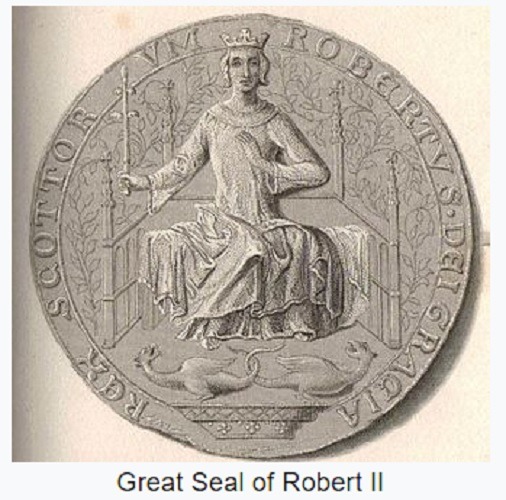

Robert II the first of the Stewart Kings died on April 19th 1390 at Dundonald Castle, South Ayrshire.
Robert was the son of Walter Stewart, 6th High Steward of Scotland and Marjorie Bruce, daughter of Robert the Bruce
An act of Parliament in 1315 decreed that the crown should have passed to Robert the Bruce’s brother, Edward, if The Bruce did not produce an heir, which would have been interesting. Edward at the time of his death in 1318 was the, albeit disputed, High King of Ireland, this might have united the two countries, but alas he died, and also he had no children or they would have been in line before the Stewarts.
After Edward died, a hastily arranged Parliament decreed the crown should pass through Marjorie, should an heir not be produced beforehand. All these acts, and if and buts during the decade after Bannockburn were cancelled out when The Bruce and Elizabeth de Burgh produced an heir. King David II though married twice, failed to have any children to either wife, he is also said to have had a number of mistresses, I can find no evidence of any illegitimate children either, and so it reverted to the line through Marjorie Bruce, daughter of Robert I.
Young Robert was well thought of with one chronicler describing him to be
‘for the innate sweetness of his disposition generally beloved by true-hearted Scotsmen’.
Over 600 years later the jury is still out on Robert II, some say he was quite ineffective, the machinery of government was allowed to stagnate with Robert using honours as a way of controlling the more powerful barons. The rule of law was also weakened and crimes went unpunished. Direct taxation lapsed and barons and officials siphoned off money from customs duties, nothing changes in that way I bet!
Others say this style of bestowing honours made him a successful monarch, me I see little startling in his life, except his recruiting John Barbour to write the life of his namesake King Robert I, “The Brus” The epic tale is a mine of information about our most famous King.
Robert the second was also the father of one of the nastiest pieces of work in Scottish history, Alexander Stewart, Earl of Buchan, the Wolf of Badenoch, his father backed his method of “management.”
In dealings with England he was most successful with a The victory of the Scots over the English at the Battle of Otterburn, it was tainted by the loss of James, Earl of Douglas, more of that in August.
Robert II toured the north-east of the kingdom in late January 1390 and returned to Dundonald Castle in Ayrshire where he died on 19th April and was buried at Scone on 25th April
What he lacked in his leadership he made up for in another field, he had 14 children by his two wives and at least another seven to other women, this was to cause conflict with later generations, but it left no shortage of potential heirs, his eldest son, John succeeded him, taking the name King Robert III.
6 notes
·
View notes
Text
Deidre Hall Vs. Phyllis Logan
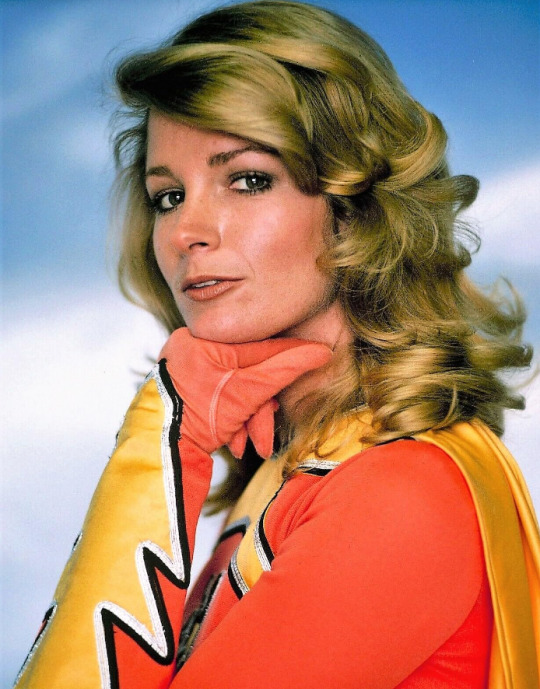

Propaganda
Deidre Hall - (Electra Woman & Dyna Girl, Days of Our Lives) - No text propaganda
Phyllis Logan - (Lovejoy, Play for Today, And a Nightingale Sang) - Phyllis Logan starred in a number of TV plays on British TV in the 1980s and 1990s but her best known lead role from the era was as Lady Jane Felsham, opposite Ian McShane as Lovejoy an antiques dealer. Her performance in the TV film And a Nightingale Sang as Helen was poignant and moving but Phyllis herself was radiant. Just look those blue eyes and captivating smile!
Master Poll List of the Hot Vintage TV Ladies Bracket
Additional propaganda below the cut
Phyllis Logan:



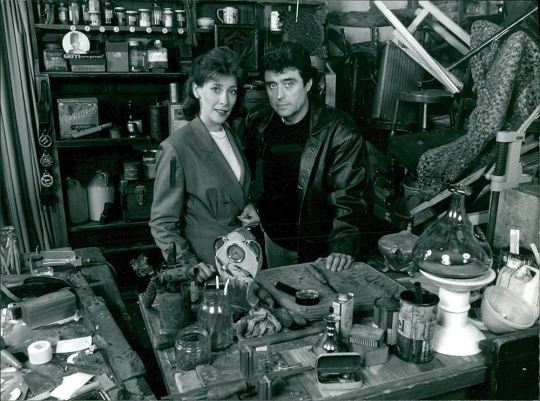
15 notes
·
View notes
Text

Good Morning from Scotland 🏴
Sunriise at Balmedie Beach, Aberdeenshire.
📸leefowlie/Lee Fowlie Images on Instagram
78 notes
·
View notes
Text

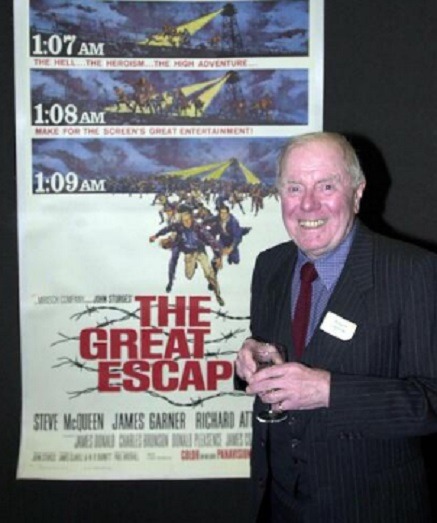


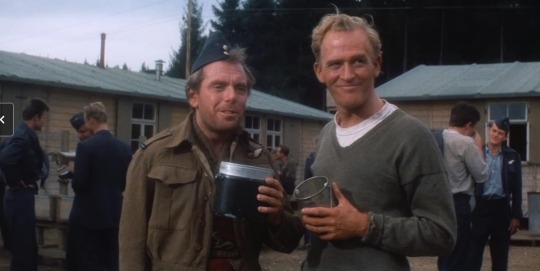
Angus Wilson Lennie was born on April 18th 1930 in Glasgow.
Many of you of a certain age might remember Angus as Shughie McFee, the chef in Crossroads but others, myself included he will always be remembered as Archibald Ives, 'The Mole' in one of the best ever films, in my opinion, The Great Escape.
Lennie was born and brought up in Shettleston, in Glasgow's East End, where he attended Eastbank Academy he began in show business as a dancer and stand up comedian. He was a song and dance man by the age of 14, performing at the Glasgow Metropole and was then on the variety circuit prior to making the transition into stage acting at Perth Theatre in the late 1940's In 1957, he made his television debut in the Armchair Theatre play The Mortimer Touch.
Two years later, he was cast as the cabin boy Sunny Jim in the BBC Scotland comedy series Para Handy- Master Mariner the first of the Para Handy tales in 1959. Other TV roles through the years included, The Saint Dr Who, Z Cars, Rumpole of the Bailey, Lovejoy, The Onedin Line, All Night Long, Keeping Up Appearances and Monarch of the Glen.
On stage, he appeared in six pantomimes over 10 years with the comedian Stanley Baxter at the King's Theatres in Edinburgh and Glasgow, and toured the Far East with Derek Nimmo's company.
On the big screen as well as The Great Escape he was also in Oh What a Lovely War, 633 Squadron and The V.I.P.s alongside Richard Burton.
Lennie died on 14 September 2014 in Acton, West London, aged 84.
8 notes
·
View notes
Text






Happy Birthday David Tennant born April 18th 1971.
Born David McDonald, David was brought up in Bathgate and Ralston and he knew from an early age he wanted to be an actor, at the age of three, Tennant told his parents that he wanted to become an actor because he was a fan of Doctor Who. His parents were very religious people and tried to discourage him but he himself admits to being “absurdly single minded” in his ambitions, educated at Ralston Primary and Paisley Grammar School. He acted in school productions throughout primary and secondary school
At aged only 11 the respected Scottish actress Edith MacArthur told his parents he would become a successful stage actor, David attended the Royal Scottish Academy of Music and Drama on saturdays and passed an audition age 16 to enter the academy as one of its youngest students. From there he took several stage roles at Dundee Repertory Theatre.
His first big break came in 1994 when he was cast in a lead role in the Scottish drama ‘Takin’ Over the Asylum’. He then moved to London where his career thrived and, most notably, he spent several years as a member of the Royal Shakespeare Company, and took lead roles in the critically acclaimed TV dramas ‘Blackpool’ and 'Casanova’ and of course the role which catapulted him into “stardom” as Doctor Who.
Since leaving Doctor Who in 2010 his career has gone from strength to strength, with lead roles in films such as Fright Night, Harry Potter and the Goblet of Fire and St. Trinian’s 2: The Legend Of Fritton’s Gold and in TV series including Spies of Warsaw and the very popular Broadchurch which has just finished it’s third run on ITV. Tennant still treads the board regularly, as well as being in demand for films and TV work, he is married to Georgia Moffett who he met when they co-starred in Doctor Who, her father is actor Peter Davison who took was also Doctor Who in the 70’s!
David’s career has gone from strength to strength, with lead roles in films such as Fright Night, Harry Potter and the Goblet of Fire and St. Trinian’s 2: The Legend Of Fritton’s Gold and in TV series including Spies of Warsaw and the very popular Broadchurch which was remade in the U.S as Gracepoint, which showed his ability to adapt his accent to a different audience.
During the pandemic over the past couple of years David has kept himself busy withthe likes of Ducktales, which as an animated series he has not had to break restrictions.
We saw him in the thriller Livtenko, about the Russian dissident poisoned in London, he was also in the drama series Inside Man, which, in my opinion was just a bit silly, although well acted silliness..
Last year David returned to our screen in the second series of Good Omens as weill as a surprising reapperance in Dr Who, sd well as turning up on The Simpsons and Ark: The Animated Series.
Looking forward David is due to appear alongside his wife in a TV series called hide, and another show called Rivals, a third helping of Good Omens is also in the pipeline.
15 notes
·
View notes
Text
Today is World Heritage Day
Oiginally known as the International Monuments and Sites Da it is a global celebration of this planet’s heritage. It’s all about increasing the awareness of the importance of the diversity of cultural and natural heritage and preserving this heritage for future generations..
In Scotland we’re lucky enough to have no less than six UNESCO World Heritage Sites. they are;
St Kilda.
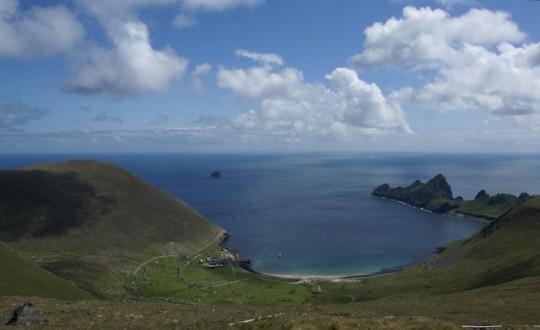
The remote Hebridean island archipelago is one of only two-dozen global locations with World Heritage Status for both natural and cultural significance.
The archipelago shares this honour with natural and cultural wonders such as the Historic Sanctuary of Machu Picchu in Peru and Mount Athos in Greece.
I'd love to visit, but it is a wee bit too expensive for me.
Edinburgh Old and New Towns.
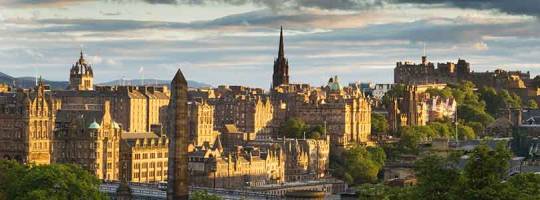
Some people have asked me which part of Edinburgh is covered by this title, well the simple answer is all of it!
The capital is a city of many eras, and its World Heritage Site comprises both the old and new towns. The Auld Toon has preserved much of its medieval street plan and Reformation-era buildings along the wynds of the Royal Mile.
The (relatively) New town contrasts this perfectly with neoclassical and Georgian architecture in regimented order.
Antonine Wall.

I've explored many parts of the wall. Constructed around 142 AD by the Romans, the Antonine Wall marked the north-west frontier of their empire. Stretching from the Firth of Forth and the Firth of Clyde, the Antonine Wall separated the civilised Romans from the wild Caledonians.
The Heart of Neolithic Orkney
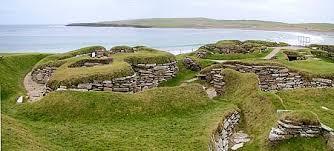
I've not visited The Northen Isles as yet, plans were in the early stages to go this year, but my friend ended up in hospita and is still recuprating, hopefully we can get something sorted when she becomes more able.
The Orkney mainland is synonymous with archaeology. It boasts the mysterious standing stones at the Ring of Brodgar and megaliths at Standing Stones of Stenness, as well as the 5,000-year-old settlement of Skara Brae and chambered cairn and passage grave of Maeshowe. Together these four sites form the heart of Neolithic Orkney, which was given World Heritage status in 1999.
The Forth Bridge
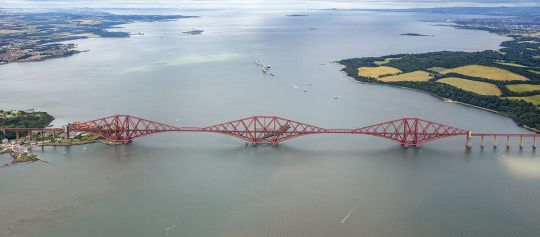
I remember as a bairn drawing and painting the bridge with a steam train going over it, but the train going over the "bumps!"
One of our most iconic and beloved bridges, the Forth Bridge was named a World Heritage Site in 2015 just after its 125th anniversary. The bridge was one of the most ambitious projects of its kind ever attempted at the time. When it opened it had the longest single cantilever bridge span in the world.
New Lanark
The last mill closed in the 1960s but a restoration programme saved the 18th-century village from falling into dilapidation.
It is an early example of utopian socialism in Scotland as well as a planned settlement – making New Lanark an important milestone in the historical development of urban planning. I have never visited, I must say I much prefer my ruined castles and abbeys.
97 notes
·
View notes
Text

Traigh Rosamol, Isle of Harris.
Looking through some pics from last year, this is one of my favourites fom a trip to The Outer Hebrides.
41 notes
·
View notes
Text



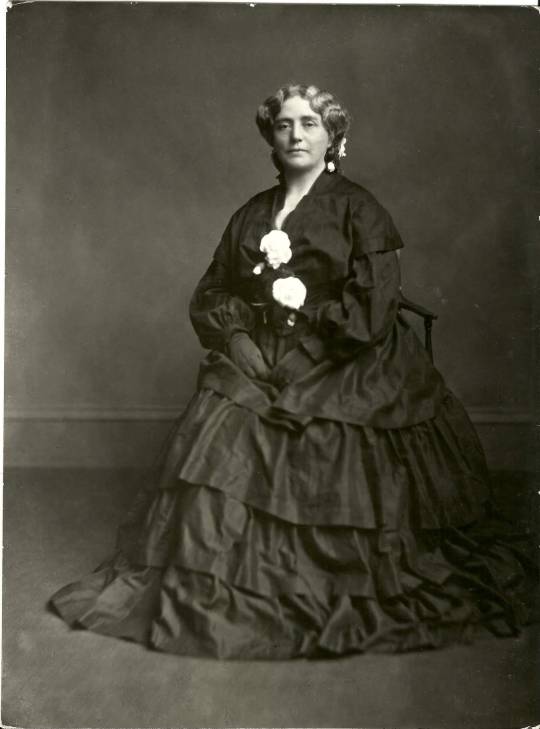


18th April 1934 saw the death of Glasgow businesswoman Kate Cranston.
Catherine, or Kate, Cranston was the daughter of George Cranston, a Glasgow baker baker and pastry maker who, in 1849, the year of her birth, diversified into running a hotel. Originally the Edinburgh and Glasgow Railway Hotel, this became the Royal Horse Hotel and, in 1852, “Cranston’s Hotel and Dining Rooms”.
Kate’s older brother, Stuart, became a tea dealer at a time when Glesga had a strong temperance movement and tea, until the 1830s a luxury for the rich, was increasingly being seen as an alternative to alcohol for the working classes. Stuart pioneered the idea of tea rooms in which his tea could be drunk in simple surroundings. Although Kate was not the first in the family to enter the business, when she established the Crown Luncheon Room on Argyle Street in 1878 she took the tea room to another level, placing great emphasis on the quality of the design and decor, on cleanliness, and on quality and choice of food.
n 1892 Kate married John Cochrane, but continued to trade as Miss Cranston’s Tearooms. She had opened her second tea room, in Ingram Street. She added a further tea room in Buchanan Street in 1897, and completed her chain with the Willow Tea Rooms in Sauchiehall Street, which opened in 1903. Miss Cranston’s Tearooms became the thriving centres of Glasgow’s society.
Kate Cranston always saw good design as central to her success. In 1888 she commissioned interior designer George Walton to design an Arts and Crafts styled extension for it the Ingram Street premises. Then, in 1900, she asked Charles Rennie Mackintosh and his wife Margaret Macdonald to design a room, also at Ingram Street. She must have been impressed with the result, because she entrusted the pair with all aspects of the design of the Willow Tea Rooms. The results were a sensation at the time, and remain so today, such is the enduring quality of excellent design.
Kate Cranston pursued a number of other projects over the following years, sometimes calling on the design skills of Charles Rennie Mackintosh and Margaret Macdonald. When he husband died in 1917 she sold her tea rooms and other business interests, and withdrew from public life. She had no children and after her death in 1934 it emerged that she had left two thirds of her estate to the poor of Glasgow.
7 notes
·
View notes
Text


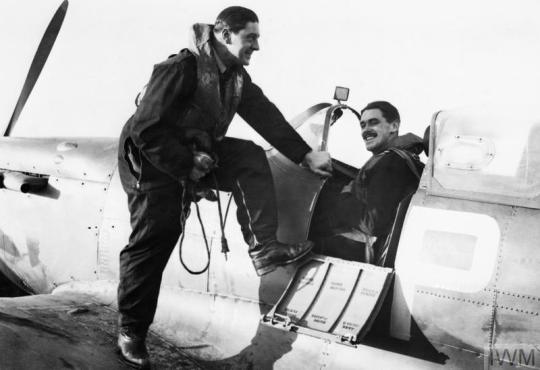
Harbourne Mackay Stephen was born in Elgin on 18th April 1914.
Harbourne was the son of a bank manager. He was initially educated privately, but then went to schools in Edinburgh and later at Shrewsbury School in Shropshire. He finished his schooling when he was 15-years-old and soon afterwards shifted to London to work in the newspaper industry. His first job was copy boy with Allied Newspapers and later he moved to the advertisement staff of the Evening Standard.
Stephen joined the Royal Air Force Volunteer Reserve in April 1937 as an and learned to fly. Having achieved the required standard and number of flying hours, Stephen was offered the chance to train with the regular RAF for six months and was given six months leave of absence from his job.
He was offered a full Commission in April 1940 Stephen was posted to 74 Squadron at Hornchurch Over Dunkirk on 24th May he shared in destroying several German aircraft.
Pilot Officer Stephen shot down his first German plane on July 28 1940, and in the next 14 days he shot down 11 more. His score of eight victories in one day came on August 11th when he destroyed three Me109s and two Me110s, probably destroying another and damaging two more. He was awarded the Distinguished Flying Cross.
Flying Spitfires with 605 squadron he took part in the air battles over France and Dunkirk and throughout the thick of the Battle of Britain. He was one of the top scoring R.A.F. pilots at the end of 1940 with 22 and a half air victories
Harbourne Mackay Stephen was the first airman to be awarded a DSO, )Distinguished Service Order)in the field As one of the ''Tigers'' (74 Squadron) he shared the honour of shooting down the 600th aircraft to be destroyed by fighters from a single RAF. After the Battle of Britain, Stephen was posted to Turnhouse , Edinburgh as Chief Flying Instructor; but this was not his idea of active service, and he soon volunteered to go to the Far East in 1942 where he took command of 166 wing, remaining in fighters until the end of the war.
After the war he had a successful career in newspapers where he became managing Director of the Daily Telegraph and Sunday Telegraph. He died on 20th August 2001.
10 notes
·
View notes
Text

Good Morning from Scotland🏴
Findhorn beach sunrise
🏴Findhorn Foundation on Instagram
52 notes
·
View notes
Text
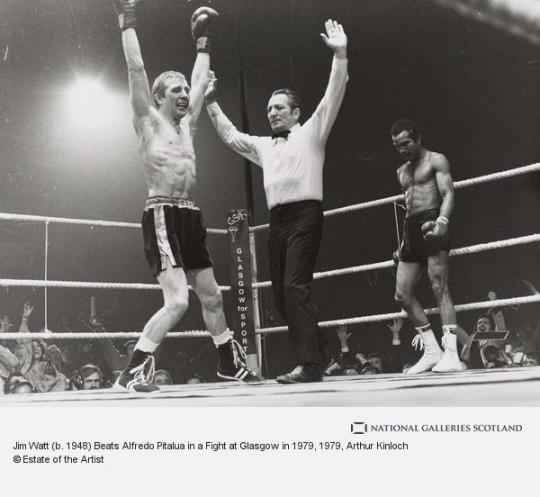
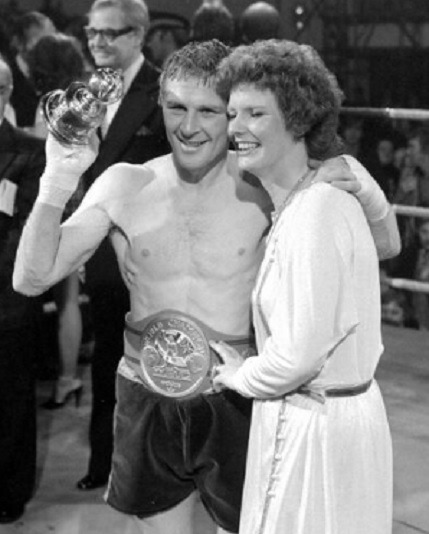

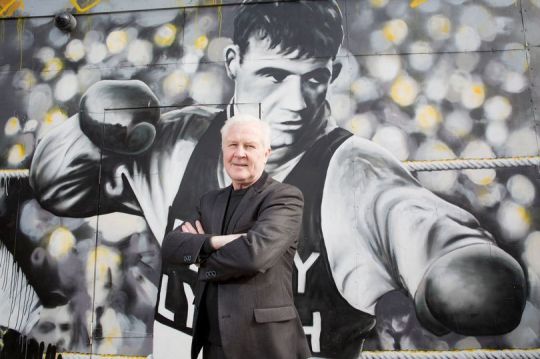
On April 17th 1979 Scottish boxer Jim Watt became world Lightweight boxing champion beating Alfredo Pitalua at The Kelvin Hall.
Glaswegian Watt a skilled southpaw with a good punch, Watt captured the vacant WBC title against the Colombian. Jim was a very clever boxer, the fight was stopped in the 12th round, back in the days when fights went 15.
Jim managed to compile four successful title defences including wins over such notables as Howard Davis Jr and Sean O'Grady, before losing to Alexis Arguello in the last fight of his ( Watt’s) career. As a young fighter Watt also held the EBU and Commonwealth British titles. In 1973, a 17 fight Jim Watt faced fellow countryman Ken Buchanan. Watt fared well and lasted the 15 rounds despite being vastly out experienced but at the end couldn’t beat his more seasoned counterpart.
In retirement Jim Watt has commentated on many fights worldwide, he hung up his mic after 40 years at the ringside in 2016.
11 notes
·
View notes
Text

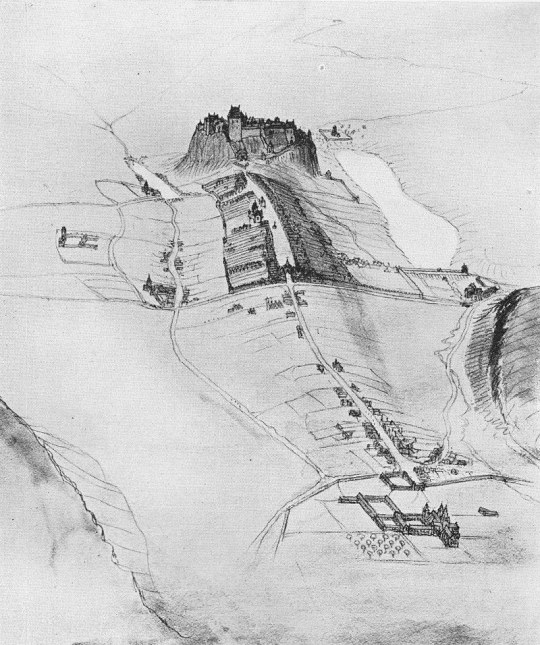

On April 17th 1341 William Douglas helped retake Edinburgh Castle from the English.
There are a few different versions of this story, all of them are linked with Sir William Douglas, Lord of Liddesdale, who was a second cousin of The Good Sir James, who the English knew as The Black Douglas.
Posing as a French ship's Captain, William Bullock, one of Douglas' band, gained admittance to the castle and offered the contents of "his ship" for sale to the English garrison. When the English agreed to buy the cargo of food and wine, Bullock arranged for it to be delivered the following morning.
As dawn broke the carts bearing the "cargo" arrived at the castle gate. The portcullis was lifted and the carts began entering the castle. As the first cart passed under the raised portcullis, the cart driver upset it so that the gate could not be lowered. The other cart drivers attacked the gate guards and gave a bugle call which signalled Douglas and his troops.
This was the last time the English held the castle in their own right.
The second pic shows how the city of Edinburgh would have looked about a century after this event.
14 notes
·
View notes
Text


April 17th 1895 saw Scotland’s first cremation at Glasgow’s Western Necropolis.
After a long search for an appropriate piece of land bought in 1893, it was two years before the first cremation took place. The Crematorium was built in the gothic revival style. The architect used only the finest materials, including red sandstone and rare marble and included fine carvings, dogtooth ornament and a ‘descending catafalque’ which the Directors considered to be less of a departure from a traditional earth burial.
Cremations were extremely slow to catch on and, after ten years, only 191 had actually been carried out. After a further 30 years the annual figure was still only 346 but that did not deter the Society and, in 1936, they set to work doubling the capacity of the chapel to 100 and building four additional floors onto the Crematorium . In the late 1940’s, as a result of increasing popularity, a second chapel was commissioned, opening as an extension of the existing buildings in 1954.
Wall space in the Chapel was widely used for memorial plaques but by 1953 the space was entirely used up and it was therefore decided it was decided to introduce a Book of Remembrance that continues to be in use to this day.
13 notes
·
View notes
Text



Spring is my favourite time of year on Princes Street when the colourful Cherry blossom appears.
78 notes
·
View notes
Text



17th April 1892 saw the death in Toronto of Scottish-born Canadian political leader Alexander Mackenzie.
Alexander Mackenzie was born near Dunkeld. His parents were poor, and young Mackenzie left school to apprentice himself to a stone mason. At the age of 20 Mackenzie emigrated to Canada, where he soon found work in his trade at Kingston, Upper Canada. Prospering, Mackenzie moved to Sarnia, further west, as builder and contractor. He was also a concerned citizen, and in 1852 he became the editor of the Lambton Shield, a tiny newspaper that nonetheless served to give him access to the world of politics. In 1861 he ran successfully for the Assembly as a Reformer, and in 1867 he was elected to the first Parliament of Canada, where he became the leader of the opposition to the government of Glasgow born John Alexander Macdonald. For a time in 1871/1872 he was treasurer of Ontario, but in 1872 he determined to devote his time to federal politics.
The Macdonald government was pressing ahead with plans for a transcontinental railroad but had unfortunately become too close in its relations with financiers and contractors. The resulting "Pacific scandal" drove the government from office in disgrace, and Mackenzie became prime minister in November 1873.
The Mackenzie administration had some able men in it, but the Liberals had bad luck in taking power at the onset of a long business depression. Mackenzie's only remedy was to trim expenses to the bone and to halt the construction of the railway. The depression continued unabated.
There were some real successes, however. As a convinced democrat, Mackenzie extended the right to vote and introduced the secret ballot. A Supreme Court was established, the Royal Military College of Canada was founded, and the nation was pushed toward independence after Mackenzie and his attorney general, Edward Blake, trimmed the powers of the governor general to interfere in affairs of state.
For all these accomplishments, however, the nation was unhappy, and when the Conservatives began to advocate a protective tariff to encourage the development of Canadian industry, they found ready audiences. Mackenzie, as a free-trade Liberal, regarded the tariff as an abomination, but not enough of the electorate agreed with him and the Liberals were defeated in 1878.
For 2 years more, Mackenzie, who is often described as a dour Scot led the Liberals. He remained in Parliament until his death on this day 1892.
6 notes
·
View notes